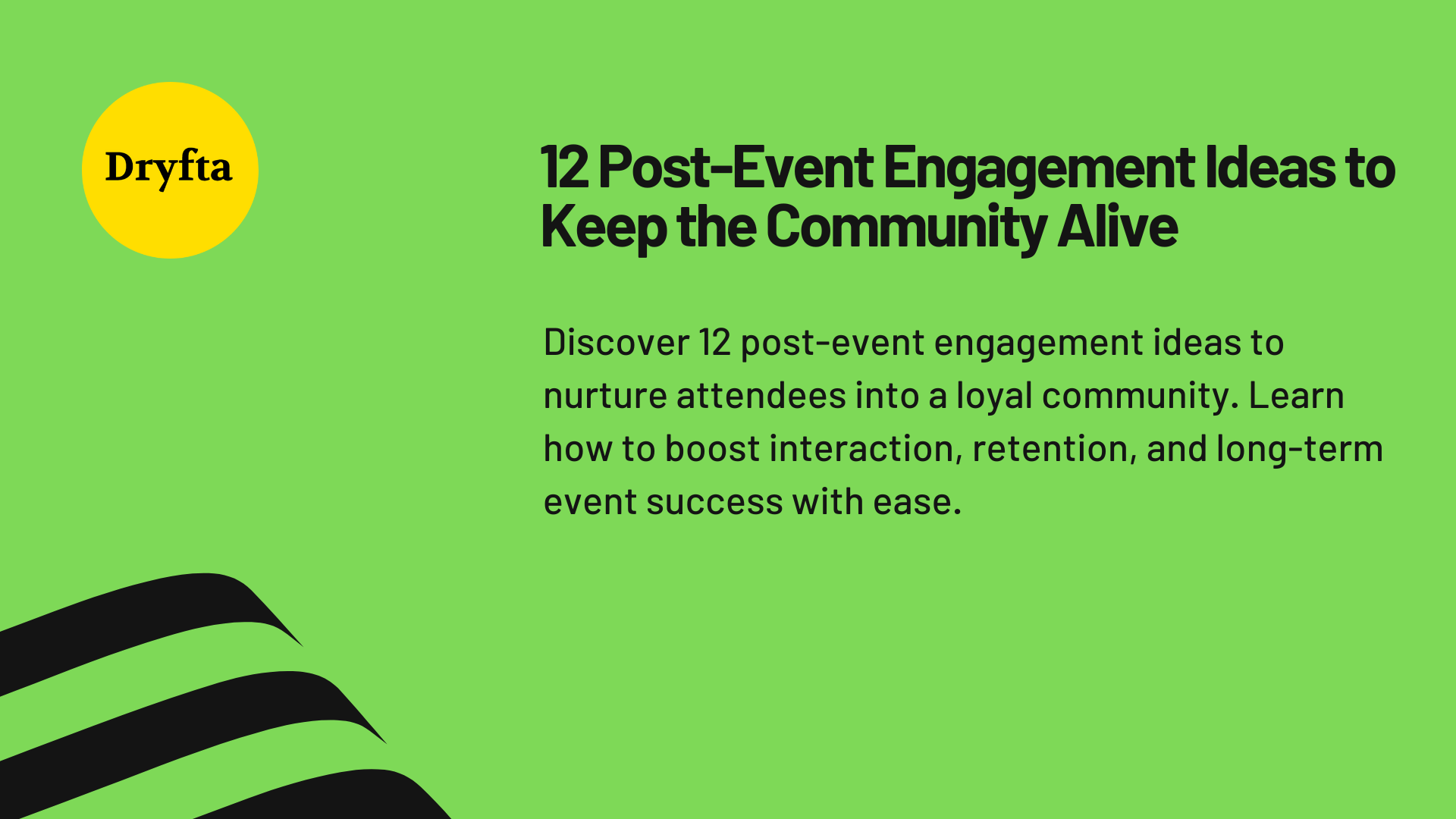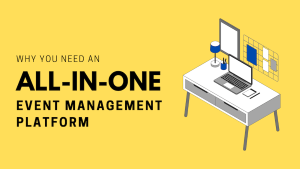
You likely spent a lot of time, energy, and money on this event, and now that it’s over, you think your job’s done. That’s where you’re wrong! The real work is about to begin now. You can deepen relationships, share content again, and convert the attendees into a community of loyal followers after the event. There are post-event engagement strategies that you can instantly implement to keep up with the good vibe of any event, whether it is online, offline, or a combination of both.
A powerful post-event engagement mix can have such an effect that participants become promoters, those who have not seen the event become the next participants, and people who have only briefly visited become a community that sticks. Deepen the conversations, get more feedback, and strengthen the loyalty to your brand or cause by continuing with the 12 practical ideas below.
1. Timely, Custom Thank-You and Follow-Up Mails
A thank-you and follow-up mail, which is heartfelt, personal and timely, should be sent within 24 to 48 hours after the event ends. Segment follow-up emails based on the behaviour of the attendees. Personalisation significantly increases the open rates and also communicates to the recipient that you recognise them as a person and not just a number.
Use short, very focused CTA words, such as view recap, claim slides, or join the community. Prepare different drafts for each segment, obtain session tags from registration data, have one clear CTA in the text, and test subject lines to get the best open rates.
2. A Tactical and Quick Post-Event Survey
Surveys are essential. However, they must be kept extremely short, only 3 to 6 questions. These questions should be concentrated on information that can be acted upon, for instance, the main takeaways, the next topics of interest, and the requests for resources. The data becomes the source of content, product decisions, and targeted outreach.
Keep the turnaround time between 48 and 72 hours, use conditional questions, and prepare a public summary of the most frequent answers to demonstrate that you have listened.
3. Develop a Content Hub Post-Event
It is a great idea to assemble all the content in one single easy-to-navigate page with a URL that is search engine-friendly and that contains the video recordings of the sessions, the slides, the speaker biographies, the key quotes, and the resources.
A post-event engagement hub is a content-accessible tool that serves as a great reference both for attendees and for prospects. Doing it this way, you should also have video time codes, download links, and a brief “what we learned” summary for each session.
4. Host Short Follow-Up Workshops
Turn those sessions that sparked the most interest into interactive webinars or small roundtable discussions that explore in-depth the topics that were most mentioned in the survey. These brief and more accessible encounters not only strengthen relationships but also give the participants an extra perceived benefit. Have the original speakers or community leaders limit the number of participants for a more personal atmosphere and record for the resource hub.
6. Share Post-Event Engagement Materials
A full rewatch of a recording is something that people hardly ever do. Take the top 30 to 90-second moments of the recordings, find the most quotable lines, and create social carousels or short videos for LinkedIn, X, and Instagram. These are very shareable, create FOMO, and attract new people to the conversation. Focus on moments that deliver useful takeaways, put tags on speakers and attendees, and mention your event hashtag.
7. Get Users to Create Content
Invite those present to post pictures, take notes, and share their “aha” moments using a uniform hashtag. Share the best UGC on your platforms to not only empower the most authentic voices but also to give the attendees the feeling that they are recognised. UGC works as a brand’s reach-extension tool in an unplanned manner and, thus, can be considered as a brand-created posts’ performance, which is better.
8. Gamification and Continuous Challenges
Transform follow-ups into fun micro-experiences, content scavenger hunts from the session, quiz leaderboards, badges for community actions, or solving problems related to the themes of the session. Gamification softly motivates revisits and thus, engagement becomes measurable. Use simple point systems and public leaderboards, and provide the first contributors with gifts or recognition as a reward.
9. Gather and Display the Testimonials and Case Studies of the Attendees and Speakers
An excellent idea is to develop brief attendee highlights, speaker interviews, and case studies that emphasise the actual results of the event. Such stories serve as evidence of the event’s worth and, therefore, as social proof, to be used for attracting new participants. People can be directly approached for short video testimonials, or you may have some follow-up questions in your survey, from which you can obtain testimonials.
10. Personalised Content Paths and Recommendations
Use data about the user’s time at a session, their answers in a survey, and click behaviour to give them the most suitable resources: “If you liked X, you might like Y”.
Personalisation is a potent instrument in the conversion funnel, as it not only maintains the relevance of the content but also raises the probability of conversion into paid offerings, memberships, or attendance at the next events. Make topic tags for content, write short email sequences for each user interest, and consider the implementation of automated recommendation systems based on event behaviour.
11. Motivate Event Attendees to Visit Local or Online Meetups and Social Gatherings
One way to keep up with the post-event engagement is by having smaller get-togethers of people locally and also online, like district meetings, virtual coffee hours, or a group of people led by a speaker. These informal meetings deepen the relationships that help you convert acquaintances into friends. Provide various hours to attend the event for people from all over the world, and also let them be able to connect not only based on their interests but also by their location.
12. Close the loop
Being transparent is one of the main elements that helps to maintain trust. Make public a brief “you spoke, we listened” update that demonstrates changes to the product, choices of content, or decisions in planning made as a result of the feedback of the attendees. This is a message that shows that involvement has influence and thus, it is very likely that the next contribution will be given.
Gather the most important ideas from the survey and write down at least 3-5 plausible ideas you’ll implement within the timeline if it is possible.
Final Thoughts
Post-event engagement is deliberately tuned to be a blend of interaction speed, relevance, and giving back. Quickly extend a thank you, attentively listen to determine what to do next, and offer easy, familiar ways for your participants to keep in touch. If you do that regularly, your event turns into a community engine, rather than just a single day on the calendar.
Post-event engagement blends interaction speed, relevance, and giving back. Quickly send a thank-you note, listen for next steps, and offer simple ways for participants to stay connected. By doing this daily, your event transforms into a community engine rather than just a day on the calendar.
Want to create sustainable community engagement without any hassle? Request a demo today and find the ways Dryfta can be a great help throughout your event lifecycle.




